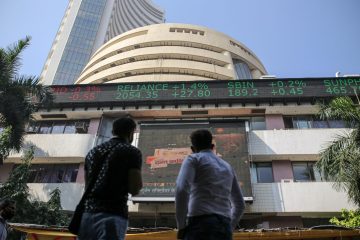)
The regulator is expected to introduce stricter norms for F&O trading soon.
Understanding F&O trading
Futures and their risks
Imagine you believe that GroupX stock, priced at Rs 100 today, will rise to Rs 120 next month. You enter a futures contract to buy GroupX stock for Rs 100, but the actual exchange happens on a set date—say, the last Thursday of next month.
If the price rises to Rs 120 by the deadline, you buy at Rs 100 and sell at Rs 120, making Rs 20 per share. But remember, these aren’t small bets; you’re dealing with large quantities, so while your profits can multiply, so can your losses.
If the price crashes to Rs 80, you’re still forced to buy at Rs 100, taking a Rs 20 per share loss. With the leverage involved, this loss can quickly become devastating. This is where many traders get caught—they underestimate how quickly small price changes can lead to significant losses.
Options and their risks
Options give you the right, but not the obligation, to buy or sell a stock. Imagine you pay Rs 10 for the option to buy 100 shares of GroupX at Rs 100. You can use this option if the price goes up, but you can let it expire if the price drops.
If GroupX jumps to Rs 120, you buy at Rs 100 and sell at Rs 120, making a Rs 1,000 profit after deducting your Rs 10 option cost. But here’s the catch: such gains are not common for most traders.
If the price plummets to Rs 80, you simply let the option expire, losing only the Rs 10 you paid. While this may seem like a smaller loss, most traders end up buying and selling options multiple times, incurring cumulative losses over time.
How do average traders perform in F&O?
The Sebi study revealed that between the financial year 2022-23 (FY23) and FY24, more than 10 million (1 crore) Indians tried their luck with F&O trading. About 93 per cent of these traders made an average loss of Rs 2 lakh each. These losses are often amplified by high costs, such as brokerage fees and taxes.
Almost all traders who dabbled in F&O traded options at least once. The report indicated that 91.5 per cent of small traders (those trading less than Rs 1 lakh) lost money in FY24. Reasons for these losses include market volatility, small price changes, transaction costs, and psychological factors that work against the average trader.
On average, each trader spent Rs 26,000 just on transaction fees in FY24. Over three years, from FY22 to FY24, traders collectively paid Rs 50,000 crore in these costs, which significantly eroded their profits.
Despite the risks, why do traders keep returning to F&O?
It’s the undercurrent of hope that keeps traders coming back. As losses pile up, many believe that a new bet could help them recover what they’ve lost or even strike it rich next time. This gambling mindset complicates the situation further, as losses continue to accumulate. The report highlighted that in FY22 and FY23, as many as 76 per cent of traders continued trading in FY24, but only 8.3 per cent managed to turn a profit in their third year.
How is Sebi planning to tighten the F&O norms?
The regulator is expected to introduce stricter norms for F&O trading soon. Key measures include limiting weekly options contracts to one index per exchange. Additional proposals involve requiring traders to add more money as collateral, especially as contracts near their expiry date, and raising the minimum contract size from Rs 5 lakh to between Rs 15-20 lakh. This will be further increased after six months of the introduction of the contract—a move aimed at creating higher entry barriers to promote more responsible trading practices.
First Published: Sep 24 2024 | 2:19 PM IST
Note:- (Not all news on the site expresses the point of view of the site, but we transmit this news automatically and translate it through programmatic technology on the site and not from a human editor. The content is auto-generated from a syndicated feed.))



